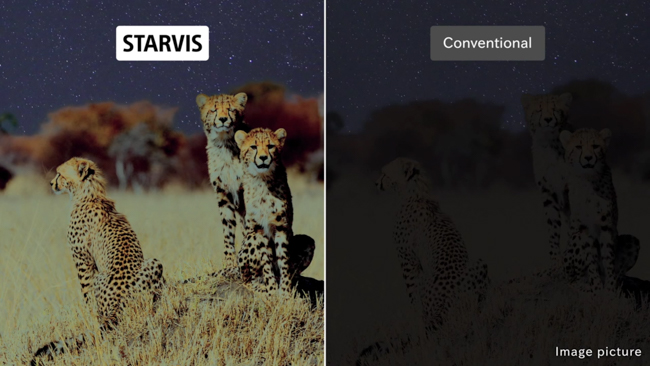
Sony has released two videos today that manage to accomplish something quite spectacular. They make you think and possibly reframe the camera sensor industry, but at the same time want to gouge your eyes and plug your ears. How did they manage this rather unusual feat? They released some strange and god-awful press videos showing off their new ‘STARVIS’ and ‘PREGIUS’ sensors.
And I do mean awful. The visuals in the video are straight out of the mid-90s, and the music sounds like the sound I imagine a drunk cat makes. They do, however, get your attention and get the main gist across, which is that Sony is going into their new branch-off sensor business hard. So, what are Stars and Pregius?
Pregius sensor: “The Pregius is global shutter pixel technology for active pixel-type CMOS image sensors that use Sony’s low-noise CCD structure, and realizes high picture quality.” (Source: Sony).

Starvis sensor: “The STARVIS is back-illuminated pixel technology used in CMOS image sensors for surveillance camera applications. It features a sensitivity of 2000 mV or more per 1 µm2 (color product, when imaging with a 706 cd/m2 light source, F5.6 in 1 s accumulation equivalent), and realizes high picture quality in the visible-light and near-infrared light regions.” (Source: Sony).

Essentially, they are extreme low light sensors with applications in security and surveillance. It becomes immediately clear that these two new sensors aren’t necessarily being manufactured for the purpose of pleasing the photographic world, but the inclusion of a wildlife scene shows that Sony will likely trickle this technology down into their consumer camera line.
Or would it? Because while the Starvis has a name suggesting night sky photography, and uses BSI (Back Illuminated Sensor) tech, it also make use of light near the infrared spectrum, which greatly boosts its sensitivity. This may sound great, but it comes at the possible price of skewed colors, making this fine for night vision but not necessarily rendering of images.
[REWIND: SONY’S SENSORS ARE SO GOOD THEY ARE GETTING A COMPANY OF THEIR OWN]

In that very vein, I wonder if this would make for an interesting black and white shooter, and I guess this could do both should the infrared be a removable filter such as the one found on the Canon ME20F-SH, which can be set to 4.5 million ISO. I’m sure many would agree that this is Sony’s step into that arena. An arena, it can be said, it sort of already dominates with the A7S and A7SII, though these new sensors are wildly varied from the sensor to be found in the A7S.
I think this is a good thing, because with these boundaries continually being tested, we can get a glimpse of what’s coming in the consumer/conventional camera industry in which we live. Though I’ll say this, that I’d still rather companies pay more attention to developing sensors with extreme dynamic range versus extreme ISO. (You hear that Canon?)
Source: Sony Alpha Rumors













